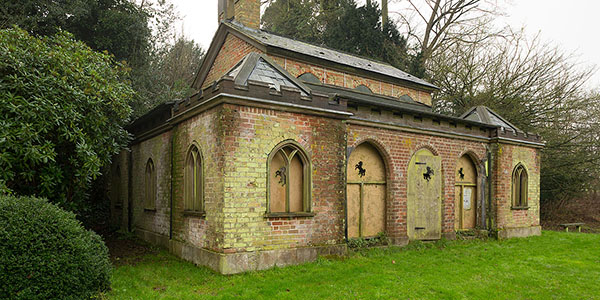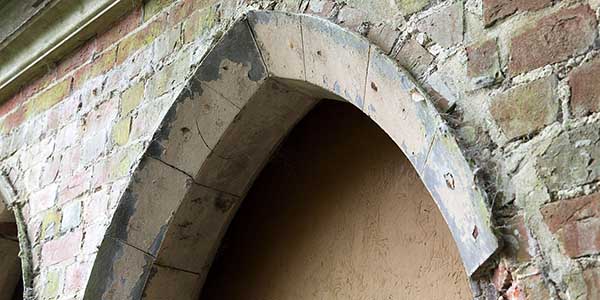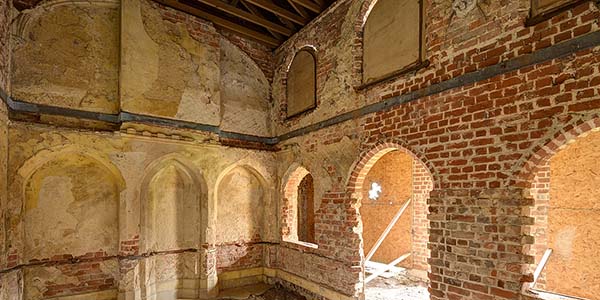It is not unusual for Landmark to undertake paint analysis when taking on a new restoration project. When done by an expert in this field, one can learn a quite surprising amount. So Catherine Hassall, whose services we have used at both Belmont and St Edward’s Presbytery, has recently visited the Dairy, and we have learnt the following. Despite being built back in 1795, the exterior has apparently only been painted twice in its lifetime! But then again, it has been derelict for all of the 20th century. But even so, just two coats of paint in over 100 years of use, suggest either a lack of maintenance or a very durable paint finish!

From the evidence still surviving on site, we have always known that the slate cladding, which completely covered the building, had a painted finish – and we guessed this was at least in part that it should resemble fine quality ashlar stonework. (Ashlar is cut stone worked to even faces with right-angled edges or arrises, often used on the front of a building and laid in horizontal courses with thin vertical joints). And Catherine’s analysis confirms that the slates were indeed coated in a grey-coloured mixture of oil paint and sand built up in at least three layers. The first was a priming coat – a thin layer of lead white oil paint (lead being a very common ingredient of old paints), tinted with a little carbon black. The next two coats were of the oil paint mixed with sand. We had suspected that there was the possibility of sand being added to the paint as we had been told that the Dairy’s architect, James Wyatt, had used just such a mix on some of his other slate-clad buildings. No doubt it served to enhance the stone-like appearance.
The pinky colour that remains on the slate today is a later phase of redecoration, using a normal oil paint without sand, but tinted with red ochre.

None of the external windows survive but we think that they too would have had the same gritty coating on them to enhance the stone-like appearance. There are two internal door frames surviving and even these had a similar gritty texture, although interestingly, here the sand was dusted or blown on to the surface of the oil paint rather than being mixed in to it.
Apart for the floors and windows/doors, all the interior was plastered, with the plainer background scored to resemble blocks of ashlar stone. These plastered surfaces were given a thin layer of limewash (or distemper) which contains tiny particles of iron oxide, which would have given the finish a warm off-white or pale stone look. This same limewash was also used over the gritty surface of the joinery as evidenced by the surviving door frames. So it looks as if the intention was very much that the entire building, both inside and out, should resemble stone – although only the floors, internal skirtings and the plinth around the exterior are actually stone.

The internal walls had subsequent redecorations when they were made more yellow than the original scheme, using yellow and brown ochres.
We have yet to take any final decisions as to the colour scheme we will adopt in the restored Dairy, but the evidence from the paint analysis provides invaluable information to help make informed choices.
We have until 31 March to raise the remaining £20,000 which will unlock a £200k donation to Cobham Dairy from Ecclesiastical Insurance. Please help if you can.